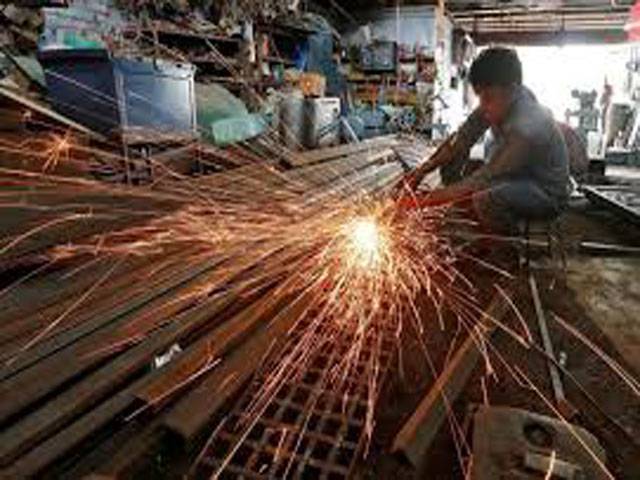ISLAMABAD-The large-scale manufacturing (LSM) had shown negative growth of 1.15 percent in February due to sluggish economic activities in the country. The LSM, which constitutes 80 percent of manufacturing and 10.7 percent of the overall GDP, had recorded negative growth of 3.03 percent during eight months (July to February) of the current fiscal year.
The data of Pakistan Bureau of Statistics (PBS) depicted the picture of pre coronavirus situation when economic activities were not halted in the country during the month of February. However, the LSM’s growth might further deteriorate when figures of March would publish in next month. All economic activities were halted in mid March due to the coronavirus throughout the country.
The international financial institutions like World Bank (WB) and International Monetary Fund (IMF) had projected negative growth for Pakistan during current fiscal year due to the existing situation. The PBS data showed that growth of big industries like coke and petroleum products, pharmaceutical, chemical, automobiles, electronics and steel sectors had declined in first seven months of the ongoing fiscal year.
Data revealed various factors that led to the slowdown included lower Public Sector Development Programme expenditures compared to last year, deceleration in the private construction activities and consumer spending on durable goods.
The government had set LSM target of 3.1 percent for the year 2019-20. However, the government would not achieve the LSM growth target due to the performance of major industries in first eight months of the current fiscal year. According to the PBS, production data of 11 items from Oil Companies Advisory Committee had registered a negative growth of 0.81 percent in July to February period of the year 2019-20. Similarly, the LSM data, provided by the Ministry of Industries and Production for 36 items, had also shown negative growth of 1.81 percent during the period under review. However, the data provided by the provincial Bureaus of Statistics for 65 items had recorded negative growth of 0.42 percent over the same period.
The negative growth is mainly the outcome of dip in production of automobiles that went down by 34.98 percent and coke and petroleum products by 13.57 percent. Similarly, production of electronic products had declined by 7.85 percent. Meanwhile, production of pharmaceutical had decreased by 5.81 percent, followed by engineering, whose production declined by 2.73 percent. The data showed that production of chemicals decreased by 0.96 percent.
Meanwhile, according to the PBS data, leather products had recorded growth of 10.52 percent, wood products 6.02 percent; fertilizers 5.99 percent and paper and board products had also recorded growth of 5.21 percent during the period under review.
On a year-on-year basis, almost all vehicles in the auto sector posted decline in previous fiscal year. Policy measures like regulatory restrictions prohibiting non-filers from purchase of vehicles, and increase in interest rates dented the demand in the automobile segment to some extent.
Furthermore, significant depreciation of PKR increased the cost of production, resulting in escalated prices and dampening the demand further. In auto sector, tractors production went down by 35.98 percent, light commercial vehicles 46 percent, trucks 48.9 percent, jeeps and cars 45.67 percent and motorcycles 10.27 percent during the period under review.
Thursday, April 18, 2024
Pakistan manufacturing sector growth tumbles by 3 per cent

X(Twitter) banned due to company's failure to address concerns, IHC told
9:07 PM | April 17, 2024
Iranian envoy lauds Pakistan's defence capabilities
9:06 PM | April 17, 2024
Ayesha Zafar’s unbeaten 108 goes in vain
9:06 PM | April 17, 2024
Dr Qibla Ayaz steps down as CII chairman
9:05 PM | April 17, 2024
Pakistan and West Indies ODI series commences tomorrow
9:04 PM | April 17, 2024
Rail Revival
April 17, 2024
Addressing Climate Change
April 17, 2024
Saudi Investment
April 17, 2024
Political Reconciliation
April 16, 2024
Pricing Pressures
April 16, 2024
Workforce inequality
April 17, 2024
New partnerships
April 17, 2024
Shikarpur crisis
April 17, 2024
Peace quest
April 17, 2024
Democratic harmony
April 16, 2024
ePaper - Nawaiwaqt
Advertisement
Nawaiwaqt Group | Copyright © 2024





